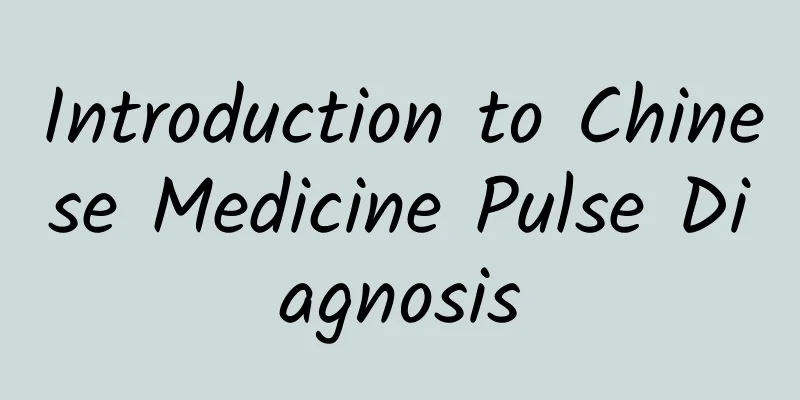Introduction to Chinese Medicine Pulse Diagnosis

|
Taking the pulse is composed of the location (deep, shallow), speed (fast, slow), intensity (strong, weak), regularity (regularity, whether there are pauses) and shape of the aortic heartbeat. Pulse diagnosis is an important part of TCM syndrome differentiation. It has key clinical manifestations in identifying the cause of the disease, inferring the change of the disease, distinguishing the authenticity of the disease, and distinguishing the prognosis of the disease. Let’s discuss this below. First of all, when taking the pulse, you should sit facing forward and "feel the right hand for the right hand and the left hand for the left hand." In other words, the doctor uses his right hand to feel the pulse of the patient's left hand, and his left hand to feel the pulse of the patient's right hand. The main clinical application is the "Cunkou diagnosis method", which is to cut the part behind the wrist of the patient's radial artery. Cunkou is divided into three parts: Cun, Guan and Chi. Cun, Guan and Chi on the right hand represent heart, liver and kidney, while Cun, Guan and Chi on the left hand represent spleen, lung and kidney. There are two basic theoretical bases for taking the pulse at the Cunkou point alone: one is that the lungs are connected to all the meridians, and the pulse will meet at Taiyuan point. That is, all the meridians of the body gather in the lungs, and Cunkou is the course of the hand Taiyin lung meridian. The Taiyuan point above it is where the meridians meet, so there is a saying that "the meridians meet at Taiyuan". Second, the stomach and intestines are the source of blood and qi for all the internal organs. The rise and fall of blood and qi for all the internal organs are closely related to the function of the stomach and intestines, and the hand Taiyin lung meridian also originates from the function of the middle burner spleen. Therefore, the rise and fall of blood and qi in the meridians of the five internal organs of the body can be reflected in the Cunkou pulse. The pulse rate is shallow. If you win, you get it. Pressing harder will reduce it slightly. This pulse is mostly a symptom of exogenous wind-cold, which means that the main symptom is on the surface. Floating and tight pulse indicates superficial cold, floating and rapid pulse indicates superficial heat, floating and strong pulse indicates superficial excess, and floating and weak pulse indicates superficial deficiency. It is common in the early stages of colds, flu and various infectious diseases. |
<<: How to soak Hovenia dulcis in water
>>: The efficacy of ginger plaster
Recommend
What causes facial paralysis in children? Stay away from these causes
Facial paralysis not only affects people's fa...
Is nail delamination caused by onychomycosis?
Nails are closely related to our health. If there...
Pregnant women have yellow discharge
Women's bodies are particularly weak during p...
Is chronic hepatitis easy to treat?
The liver is an indispensable and important organ...
What are the symptoms of damp heat?
Damp-heat is a common term in traditional Chinese...
What to do with allergic pharyngitis? Six ways to stay away from it
When pharyngitis occurs, symptoms such as nausea,...
How to treat and prevent rib neuralgia
There are two types of rib neuralgia: primary and...
Is eating chocolate useful during childbirth?
It is well known that natural childbirth is a ver...
What to do if your feet are smelly and sweaty
Foot odor and sweating mainly occur in the hot su...
What is the spleen-strengthening food therapy?
Diet is very important to everyone, because it is...
Symptoms of influenza A
Influenza A is actually a type of influenza. It h...
The dangers of laser acne treatment
Laser acne removal is a better way to remove acne...
What can vitamin E do?
Vitamin E can be said to be very popular among wo...
What to eat for fatty liver
Nowadays, many people have fatty liver, and fatty...
What are the symptoms of earwax infection?
The ear is the most important organ of the human ...









